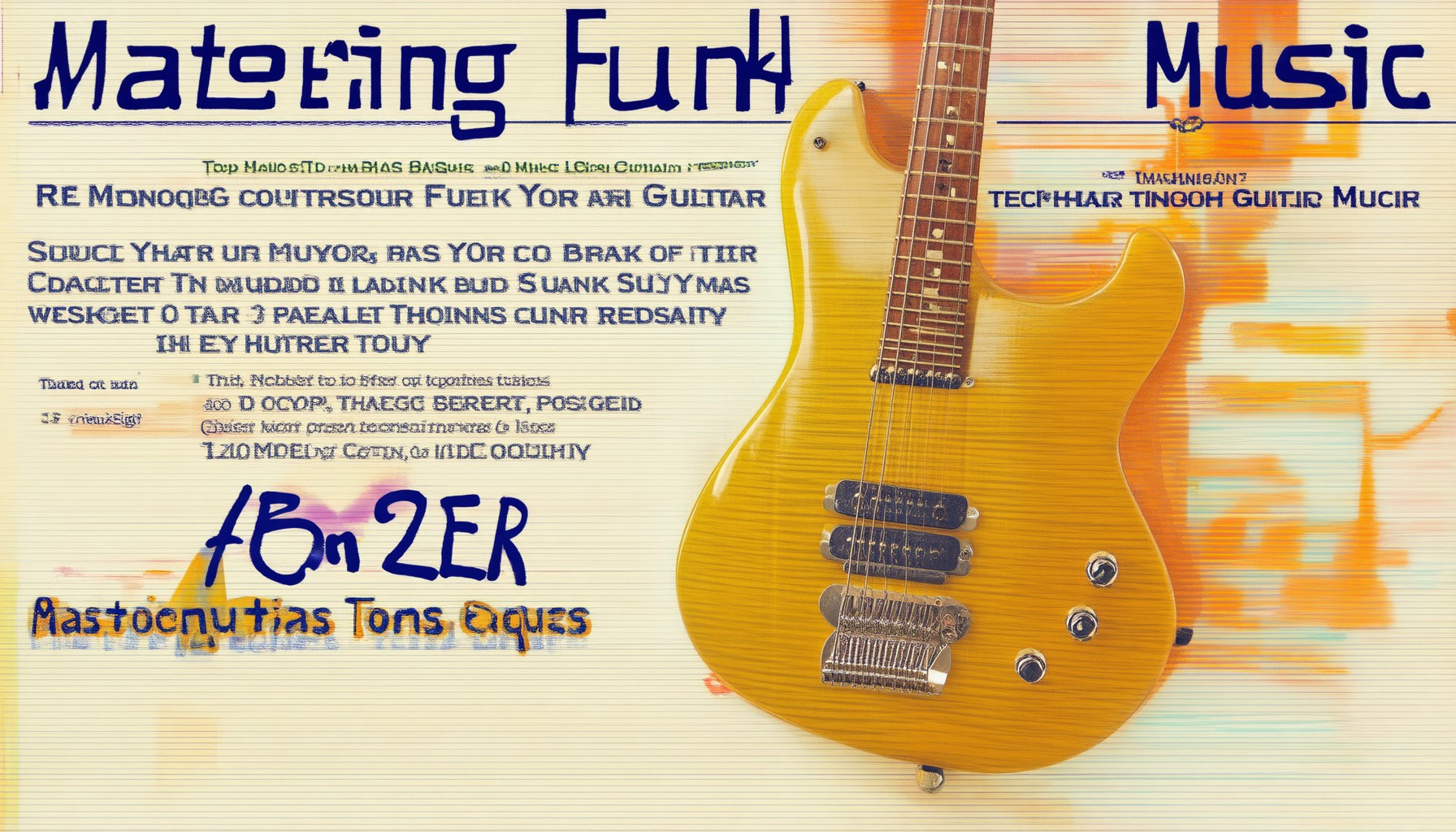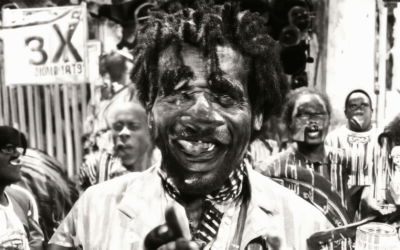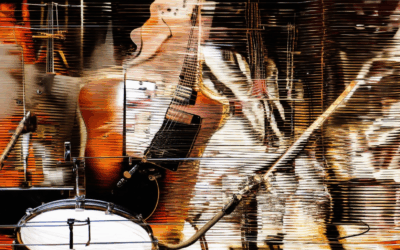Funk music is renowned for its infectious rhythms and dynamic basslines that lay the foundation for every track. For musicians aiming to master the art of playing bass in funk music, understanding the right techniques is crucial. Whether you’re a seasoned player or just starting out, this guide will walk you through the essential methods and strategies needed to nail those iconic funk basslines. From mastering the basics like rhythm and slapping to exploring advanced techniques like pull-offs and hammer-ons, this comprehensive resource will equip you with everything you need to elevate your gameplay. With the right approach, you’ll be able to craft basslines that not only groove but also stand out in any musical ensemble. Let’s dive into the world of funk bass guitar techniques and discover how you can become a master of this versatile and exciting style.
Key Takeaways
– Master Thumb Slapping: Use your thumb to create a tight, punchy sound that defines funk basslines.
– Walking Basslines: Develop steady, consistent patterns to drive the rhythm and keep the band locked in.
– Plucking for Articulation: Employ your index finger for sharp, defined sounds that add clarity to your bassline.
– Palm Muting: Create a raw, live vibe with a muted, wah-wah effect.
– Hammer On/Pull Off: Add dynamic contrast with quick, staccato effects.
– Syncopation: Infuse tension and release with offbeat rhythms.
– Play with a Pick: Achieve precise articulation and replicate classic tones.
– Experiment with Effects: Shape your tone with distortion, overdrive, and compression for a gritty sound.
– Record Thoughtfully: Use high-quality mics and positioning to ensure your bass sits well in the mix.
– Practice with Backing Tracks: Internalize grooves by looping iconic funk tracks.
– Avoid Common Mistakes: Stay focused on the groove, utilize your thumb effectively, and pay attention to the beat.
These techniques will help you craft versatile, character-rich basslines that stand out in funk music.

Bass Guitar Techniques in Funk Music
Funk music is renowned for its distinctive basslines that drive the groove and define the rhythm. Here are some of the most common bass guitar techniques used in funk:
- Slap Bass : A popular technique where the bassist uses quick, popping sounds on the strings. This creates a sharp, snappy sound that mimics the role of a drum rhythm. Slap bass is heavily featured in funk music, with artists like Louis Johnson and Bootsy Collins being notable exponents.
- Upright Bass Playing : Many funk bassists utilize the upright bass to create a deep, thumping sound. This technique often involves walking basslines that follow a chord progression, providing a solid foundation for the band. Players like Bootsy Collins and Billy “Buck” Goldsby are well-known for their mastery of this approach.
- Fingerstyle Bass : Some funk bassists use fingerstyle techniques to add complexity and expression to their playing. This involves using fingers to play melodic lines, arpeggios, and intricate patterns, which can give the bassline a more melodic and dynamic presence.
- Popping and Plucking : This technique involves using the thumb to pop notes quickly, creating a snapping effect that enhances the rhythm. Popping is particularly prominent in funk tracks, with artists like George Clinton’s bassist Billie “Bop” Eilish Popp being celebrated for their mastery of this method.
- Walking Bass : A fundamental technique where the bassline moves in a stepwise pattern, following the chords and harmonies of the song. Walking bass is essential for maintaining the rhythm and providing a sense of direction in funk music.
- Thumb-Driven Rhythms : The thumb is often used to drive the rhythm in funk music, providing a strong, consistent beat. This technique allows the bassist to play with power and precision, contributing significantly to the track’s energy.
- Rubbings and Scrapes : To add texture and interest, some funk bassists use subtle movements like rubbing the strings or employing a plectrum to create a percussive effect. These techniques enhance the track’s dynamics and contribute to its unique feel.
These techniques collectively create the rich, layered sound that defines funk music, making the bass an integral part of the genre’s DNA.
Essential Bass Guitar Techniques for Playing Funk Music
Funk bass is all about groove, rhythm, and versatility. Here are the key techniques every bassist should master to nail the funk vibe:
- Walking Basslines : Funk bass often uses a walking pattern, where the bassline moves forward with each beat. Practice this with a steady downstroke followed by an upward push, keeping the rhythm tight.
- Palm Muting : This technique involves placing the palm or fingers on the strings to mute them, creating a snapped attack and a sharp, punchy sound that’s classic in funk.
- Slapping/Popping : Use your fingers to pop notes quickly, creating a fast, articulate rhythm. This adds energy and complexity to your playing.
- Syncopation : Play notes on the offbeat or upbeats to create a syncopated rhythm, giving your bassline a driving force that locks in with the drums.
- Call-and-Response : Interact with the drummer by mirroring their rhythm. This creates a dynamic exchange that’s central to funk music.
- Hammering : Use your thumb to play aggressive, driving notes, adding a powerful low-end presence to the track.
- Blending Pizzicato and Arco : Combine plucked (pizzicato) and bowed (arco) techniques to create a dynamic and expressive sound, adding depth to your playing.
- Thumb Popping : Use your thumb to pop notes sharply, creating a snappy rhythm that’s characteristic of funk basslines.
- Using Effects : Experiment with distortion, overdrive, and fuzz to give your bass a raw, gritty sound that fits the funk genre perfectly.
- Rhythm Patterns : Learn patterns like the Boogaloo shuffle, which are popular in funk and add a unique feel to your playing.
To perfect these techniques, check out Tiger Funk’s bass lessons for in-depth guidance and tips tailored for funk music enthusiasts!

What Are the Most Common Bass Guitar Techniques Used in Funk Music?
The funk genre is renowned for its distinctive basslines and rhythmic grooves. Here are the most common bass guitar techniques used in funk music:
- Slapping and Thumb Rolls :
Slapping is a technique where the fingers are used to create a sharp, snappy sound on the strings. Thumb rolls involve rolling the thumb along the strings to create a smooth, rhythmic base. These techniques are iconic in funk music and give it that signature tight, driving feel. - Palm-Muted Chords :
Palm-muting involves holding the hand down on the strings with the palm to muffle the sound, creating a muted, rubbery effect. This technique is heavily used in funk to emphasize the offbeat rhythm and add texture to the bassline. - Walking Basslines :
Walking basslines are a staple in many genres, including funk. These lines move in a stepwise fashion, often following the chord changes in the melody. In funk, walking basslines are typically played at a slower tempo to provide a solid foundation for the upbeat rhythms. - Hammer-On and Pull-Offs :
Hammer-ons and pull-offs are quick, articulative techniques where the finger is either hammered down (hammer-on) or pulled back up (pull-off) on adjacent strings. These effects are used to add dynamics and articulation to the basslines, giving them a more expressive quality. - Rhythmic Syncopation :
Funk music relies heavily on syncopated rhythms. Bassists use various techniques, such as playing on the backbeats or emphasizing the weak beats, to create a sense of tension and release that defines the genre. - Rubato and Timing :
In funk, timing is crucial. Bassists often use rubato (slightly varying the tempo) to create a loose, yet cohesive rhythm. This flexibility allows for a more organic and groove-oriented playing style.
These techniques, combined with the influence of legendary bassists like James Brown’s bassist Billy Cox and Bootsy Collins, have helped define the sound of funk music. Whether it’s the tight slap bass of players like Les Claypool or the deep, thumping grooves of others, these methods remain central to the genre’s identity.

Top Bass Guitar Techniques for Mastering Funk Music
Funk music is all about groove, rhythm, and versatility on the bass guitar. To truly nail the funk sound, you need to master these essential techniques:
- Thumb Slapping Technique
- Walking Basslines
- Plucking Technique
- Palm Muting
- Hammer On and Pull Off
- Syncopation
- Playing with a Pick
- Using Effects
- Recording Tips
- Practicing with Backing Tracks
Use your thumb to hit the low-E string heavily, creating a tight, punchy sound that defines funk basslines. This technique gives that classic “thump” feel that’s synonymous with funk music.
Walk up and down the fretboard with a steady, consistent pattern. This creates a driving rhythm that keeps the band locked in, a key element in funk music production.
Use your index finger to pluck individual strings or groups of strings for a sharp, articulate sound. This adds definition and clarity to your bassline, making it stand out in the mix.
Place your palm on the strings to create a muted, “wah-wah” effect. This technique adds texture and depth to your playing, perfect for creating that raw, live funk vibe.
Use your right hand to hammer down on the strings with your fingers and then pull off to create a quick, staccato effect. This adds dynamic contrast and energy to your playing.
Play notes in an offbeat or irregular rhythm to create a sense of tension and release. Syncopation is a cornerstone of funk music, giving it that signature “funky drumming” feel.
Hold your pick lightly and use it to create sharp, crisp sounds. This technique allows for precise articulation and can be used to mimic the scratchy tones of classic funk basslines.
Experiment with distortion, overdrive, and compression to achieve that gritty, dirty sound that’s characteristic of funk bass. A little bit of effects goes a long way in shaping your tone.
Record your basslines with a high-quality microphone positioned close to your amp or cabinet. This ensures your bass sits properly in the mix and adds depth to the overall track.
Practice by looping backing tracks of famous funk songs. This helps you internalize the grooves and rhythms of the genre, making it easier to play along with other musicians.
By mastering these techniques, you’ll be able to craft basslines that are both versatile and full of character, making you a standout player in the world of funk music.
Key Bass Guitar Techniques Used in Funk Music
Funk music is renowned for its infectious grooves and rhythmic complexity, and the bass guitar plays a pivotal role in creating this signature sound. Below are the most common bass guitar techniques employed in funk music:
- Thumb Slapping : This technique involves using the thumb to pluck strings rapidly, creating a sharp, snappy sound that cuts through the mix. It’s a hallmark of funk basslines and gives tracks their driving rhythm.
- Popping : Popping is when the fingers are used to create short, staccato notes, often combined with slapping. This technique adds texture and energy to the bassline, making it feel more dynamic and alive.
- Walking Basslines : A walking bassline is a continuous, melodic pattern played with the left hand, moving in a stepwise fashion. This technique provides a solid foundation for the band to lock into, ensuring the rhythm remains tight and cohesive.
- Hammering : Hammering is a fast, repetitive striking of the strings with the fingers, often used to emphasize the beat in funk tracks. It creates a sense of urgency and momentum that’s central to the genre.
- Push Pull : This technique involves alternating between pulling the strings down and pushing them up, creating a subtle but effective variation in the sound. It adds depth and interest to the bassline.
These techniques, combined with a deep understanding of rhythm and timing, allow bass players to lay down grooves that are both hypnotic and infectious. The interplay between these methods helps define the unique character of funk music, making it stand out among other genres.

Best Bass Guitar Techniques for Playing Funk Music
Funk music is all about groove, rhythm, and versatility on the bass guitar. To master funk bass, you need to understand the key techniques that define this genre. Here’s a breakdown of essential techniques every funk bass player should know:
- Thumb Technique
- Master the thumb-driven style popularized by funk legends like James Brown. Use your thumb to hit the root notes and provide the driving force of the beat.
- Keep your thumb close to the strings and your index finger on the fretboard for stability.
- Practice pulling off with your thumb to create sharp, articulate riffs.
- Plucking and Pulling
- Use your index and middle fingers to pluck notes quickly for a snappy rhythm. Keep the plucks short and staccato for that classic funk feel.
- Experiment with pull-offs by sliding your left hand and letting the string ring out.
- Slapping and Popping
- Slap the strings hard with your index or middle finger for a tight, punchy sound. Use this technique to create dynamic rhythms and melodic lines.
- Pop the strings by gently touching them with your fingers to create a quick, snapping sound. This works great for funk grooves.
- Walking Bass
- Walk bass is essential for funk. Use a combination of scales and chords to create a solid foundation for the rhythm section.
- Practice running arpeggios up and down the fretboard to keep the energy going.
- Rhythmic Patterns
- Learn classic funk rhythms like the “Funky Drummer” beat. Practice syncing your bassline with the kick drum to lock in the groove.
- Use syncopation and rubato to add swing and flexibility to your playing.
- Dynamics and Phrasing
- Use dynamics to emphasize key moments in the song. Play softly for verses and louder for choruses and solos.
- Experiment with phrasing to match the song’s structure. Space out your notes to create a sense of movement and energy.
- Effects and Accessories
- Use effects like distortion and fuzz to give your bass a raw, gritty sound that fits funk perfectly.
- Consider adding a pickguard or a slide for extra slides and glides.
- Practice and Experimentation
- Practice regularly with backing tracks of famous funk songs to get a feel for the genre.
- Listen to records by James Brown, George Clinton, and others to study their basslines and rhythms.
- Don’t afraid to experiment! Funk is all about feeling and creativity. Find your own unique style while staying true to the roots.
- Common Mistakes
- Overplaying: Stick to the groove and let the rhythm section shine.
- Ignoring the thumbpick: The thumb is crucial for funk bass. Keep it handy and use it effectively.
- Not listening to the beat: Pay attention to the kick drum and snare to lock in the timing.
To take your funk bass skills to the next level, check out our comprehensive lessons and explore our top funk albums . With practice and dedication, you’ll be jamming like the pros in no time!





0 Comments